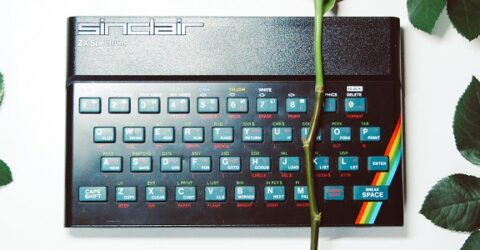How 1980s computer games underpinned today’s gaming experiences
The influence of 1980s computer games continues to reverberate, influencing modern console design and online titles alike

There’s a tendency among younger members of the population to regard 1980s computer games as the era of monochrome bat-and-ball games and Space Invaders.
In fact, these titles belong to a decade even older than that. Space Invaders debuted back in 1978.
By the time 8-bit home computers reached the UK market at the start of the 1980s, computer games had already evolved beyond recognition – as they’ve done ever since.
It’s easy to look at today’s widescreen epics and dismiss their 8-bit forefathers as irrelevant.
Yet without those 1980s computer games, modern gaming simply wouldn’t exist in a recognisable form.
Is that really true?
It really is.
While Tennis and Space Invaders were late-Seventies titles played on rudimentary consoles like the Atari 2600, the early 1980s represented a febrile period in gaming evolution.
The pace of progress was driven by feverish competition among startup British games studios such as Bug-Byte and Psion, alongside established American brands including Activision.
From a standing start, most of today’s game genres were created in less than two years for 8-bit cassette-powered home computers – notably the Sinclair Spectrum and Commodore C64.
Psion gave us 1982’s Chequered Flag, which was a first-person motor racing game and arguably acted as Genesis for modern-day masterpieces like Forza Horizon and F1 23.
The following year, Legend released Valhalla – a third-person RPG adventure based on Norse mythology. Any resemblance to the God of War PS4/5 games is not at all coincidental.
Also in 1983, Bug-Byte launched Manic Miner, inspiring a platform genre that extended through Zool and Sonic the Hedgehog in the 90s to modern titles like Ratchet & Clank and Yooka-Laylee.
Would celebrity-endorsed sports games and simulators have flourished without the runaway success (pun very much intended) of Daley Thompson’s Decathlon in 1984?
Would Football Manager – and the wider sports management genre – exist at all without early chart hits such as 1986’s Soccer Boss?
Past masters
Towards the end of the decade, games consoles like the Sega Mega Drive and Nintendo’s NES started inching towards the modern era of fast-loading, visually-immersive gameplay.
Even so, playing 1980s computer games four decades later remains a sobering experience for anyone old enough to remember them being new releases on the shelves of John Menzies.
It’s easy to mock the crude pixellated graphics and loading times of these historic titles, but they were pioneers in an industry that was only a few years old.
Crucially, the processing limitations of 8-bit machines and their blocky output graphics forced game developers to focus on maximising playability.
That’s a lesson the developers of smartphone-based games still follow religiously, with minimal on-screen real estate compensated for with perfectly judged difficulty curves and one-more-go addictiveness.
MicroProse’s 1989 Stunt Car Racer looks antiquated today with its wire-frame graphics and sluggish movement, but it made double-digit RAM stretch an implausibly long way.
Text-based strategy titles might seem prosaic in the age of the Switch, but they did a great deal to cement the popularity of RPG titles and fantasy games as we know them today.
Technological limitations also inspired concepts like single-screen platform games and filled vectors, which have far outlasted the machines they were initially developed for.
From open-world exploration (Elite) and FPS (Operation Wolf) to God games (Populous) and beat-em-ups (Street Fighter), 1980s games blazed a trail today’s titles continue to follow.
Remember that next time you settle down in front of FIFA, or load up Candy Crush on your smartphone…






